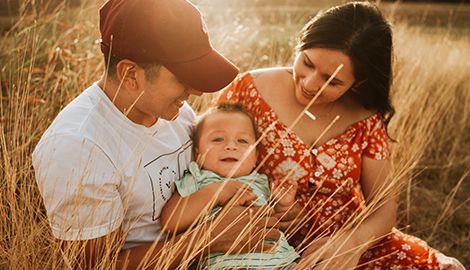The Basics: Bonding

Bonding is a process that leads to emotional attachment between parents and children. It is vital for the parent-child relationship and can promote healthy brain and social development in children. Bonding can begin as early as birth. Starting in the first hour of life, infants bond with parents through eye contact, sounds, and touch. Skin-to-skin contact in particular releases hormones that make parents feel closer to their baby and make them more likely to respond to their needs or cries. If bonding doesn’t happen right away with a baby, don’t worry! Bonding takes time and develops over the course of years and many interactions. Parents who don’t have the opportunity to bond with a child early on can still bond with them at a later age. Parents can try a range of activities to bond with a child. Some activities include:
- Enjoying skin-to-skin contact, such as stroking or hugging
- Feeding (including breastfeeding or bottle feeding)
- Helping children learn through talking, reading, or playing
- Developing routines and traditions at home
- Teaching children new skills or hobbies
Spending meaningful time together can help parents and children build a positive foundation for their life-long relationship. Also, children are more likely to trust parents who interact with them often and show warmth, comfort, and affection. Trust is important for helping children build positive relationships and self-esteem throughout life. On the other hand, children who consistently receive little attention or affection can grow up to become more insecure, depressed, and aggressive.
Bonding is for Both Parents
It is important to ensure that the child has the opportunity to bond with both parents. Fathers, or other caregivers, can perform the same bonding activities as mothers (such as bottle feeding and cuddling), or they can find different activities just for them and the child. Parents who encourage each other to be part of the child’s upbringing feel better supported and confident in the child’s growth and development.